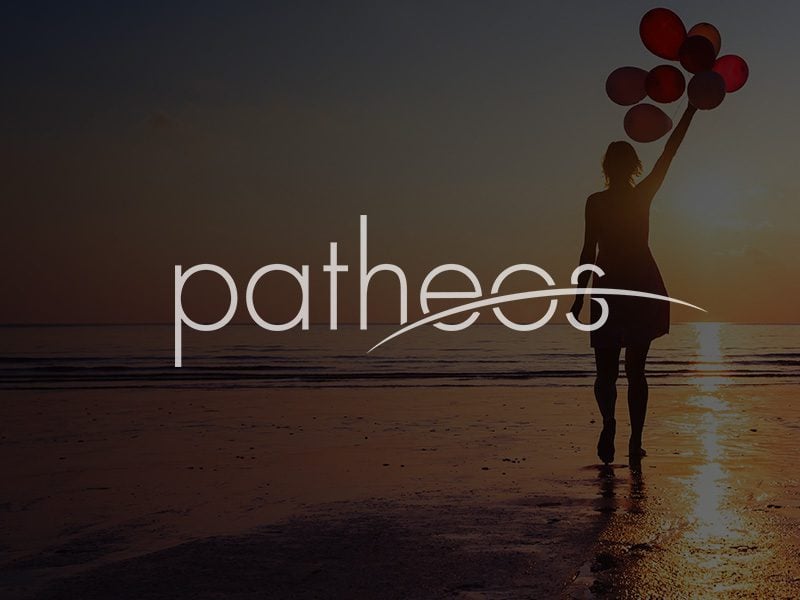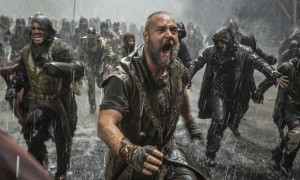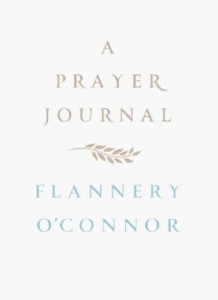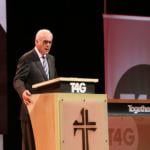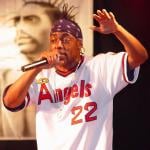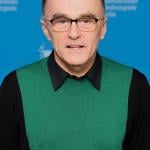WHY ACT ONE-DC?
One of our Act One alumns, Erik Lokkesmoe, works in Washington and wrote a thoughtful piece for our Act One community letter which deserves a wider audience.
Why A Creative Renaissance Is Needed In Our Nation’s Capital, and How Act One Can Help
By Erik Lokkesmoe
It was more of a statement than a question. “Why Washington?” the senior
government official responded, words heavy with skepticism, when I
shared the news of Act One’s month-long session in the nation’s capital.
His query conveyed a doubt of both place and purpose: what utility does
a group of screenwriters provide in a political city – a city anxious
about elections and budget hearings – an administrative city that is
impatient with ambiguity, nuance, and imagination?
The question could just have easily been: “why art?”
Politics may be the art of the possible, but is art possible in
politics? In a city of architectural grandeur, National Galleries, the
Kennedy Center, and marbled monuments engraved with poetry and prose,
discussions (or debates) about the arts rarely stray from stale,
predictable exchanges about NEA funding and FCC fines. Art is a
second-thought, a first cut of a bloated budget, a weekend dalliance
with lobbyists. Drawing congressional district maps is often the closest
thing some Members of Congress come to artistic activity.
So, it’s an appropriate question for Act One, and for all “creatives”
that live and work in the shadows of federal buildings, “Why
Washington?”
Last year I stumbled across a new book, now a best-seller, by Carnegie
Mellon professor Richard Florida who claimed that economically vibrant
cities have two common factors: a thriving artist community and a large
gay population. The Rise of the Creative Class became the instruction
manual for mayors across the country, as economically-stagnant cities
sought to attract a hip, young workforce by offering bohemian and
business-friendly climates. What caught my attention, however, was
Washington’s rank as one of the top “creative cities” in America, as
determined by the proportion of creative workers per total workforce
population. Although Florida uses defines the “creative class” liberally
– including scientists, journalists, and entrepreneurs in the category –
it confirmed a growing suspicion: DC was more than starched shirts and
above-the-ear haircuts; it was, as the professor wrote, that “ultimate
creative center.”
Certainly, such a claim will cause New York and Hollywood to shudder.
Many don’t even consider Washington a city, let alone a creative center.
Yet the evidence is clear: from bureau reporters to think tanks,
legislators to art galleries, dot com survivors to event planners, the
capital city is not only America’s backyard, it is the home of
culture-creators.
A handful of us who work in government are quick to proclaim that the
creatives in the city – and across the country – often hold more power
than the senior politicians seated on the most prestigious committees.
Certainly, these lawmakers affect millions with decisions to raise
taxes, declare war, and fund Social Security. Artists and creatives,
however, are shaping the hearts and minds of the culture, informing the
moral imagination and instructing its beliefs and behaviors.
It is no wonder, then, why so many distrust or fear artists. Through the
subtle brushstrokes in a painting, the complex melodies in a song, the
layered meanings in a film, creatives can exercise a power politicians
could only dream of possessing: to shape the imagination through words
and images and sounds that cascade to the depths of the soul. Only art
has that ability, something Plato realized early on when he declared,
“Let me write the songs [or stories] of a nation and I care not who
writes its laws.”
Artists are more than well-trained decorators, adorning culture with
nice and pretty things. Artists create space for dialogue, for circles
of conversations in galleries and theaters, book clubs and concert
halls. They invite us to gaze upon mystery and beauty and to “see with
other eyes, to imagine with other imaginations, to feel with other
hearts, as well as with our own,” as C.S. Lewis wrote.
Last September, a group of us at The Voice Behind – a 501c3 non-profit
organization dedicated to creating, commissioning, and celebrating
transcendent works of art and media – started Brewing Culture, a
community of “creatives” that meets monthly at a bar just across the
Potomac. Our hope was to do just that: brew culture by creating space
for creativity and conversation.
It’s a speak-easy, really. A haven amidst stiff political life for
ozone-scraping creativity and gritty-as-a-country road conversation. We
invite everyone – left and right, churched and unchurched — into an
intoxicating exploration of the good, the truth, and the beautiful as
revealed through the works and words of artists. From Damah films to
Johnny Cash tributes, we enter life’s big themes – wonder, sacrifice,
discontentment – and wait expectantly on the other side to see what
happens.
As painter Makota Fujimura said over a recent dinner, echoing our
passion for Brewing Culture, “We need secular places for the Church, and
sacred places for the culture.” In other words, we need common ground
where we forget to be tame, timid, and temporal in our artistic
endeavors and expressions; we need places that capture the imaginations
of a weary and watching world.
Responding to the launching of Brewing Culture, many have had the same
reaction as that government leader, “Why Washington?” And we respond,
“Above all, here.” This is a place where creativity that “flies beyond
the stars,” as Francis Schaeffer said, can teach us about common grace,
the Imago Dei, and our innate human need to participate in recreation
and re-creation.
This need is evident in the hollow eyes of passengers on commuter
trains, the rush hour pressing their bodies together in a rhythmic,
synchronized dance as the train halts and jerks away from the city.
Imprisoned in cubicles without windows, passing the time with
predictable days of the same old work, the creative muscle atrophies. It
is no surprise that Washington’s suburbs have beautiful homes and
gardens, where workers – free from the confines of gray file-cabinets
and top-down management – can design and create and decorate their own
space.
Artists are oxygen for a city, and people are gasping from asphyxiation.
What Washington – the whole Washington, from the pinstripe suits of
Capitol Hill to the perilous slums of Capitol Heights – needs more than
anything else is an encounter with beauty, that astonishing handiwork of
the Master Artisan and his co-creators. Beauty manifested in eloquent
and honest oratory. Beauty evidenced in grace to political adversaries.
Beauty extended in neighborhoods ravaged by boarded-up homes and lottery
advertising. Act One’s presence in this city, if only for a month, can
remind us of our desperate need for beauty, for stories that awaken the
moral imagination and allow glimpses of a world, as Os Guinness says,
“that should have been otherwise.”
It is the right time and the right place for Act One, and our prayer is
that these DC screenwriters, like dropping a large stone in a still
pond, will reach the boundaries of our city, soften its dry and cracked
edges, and bring new life to the surface.


